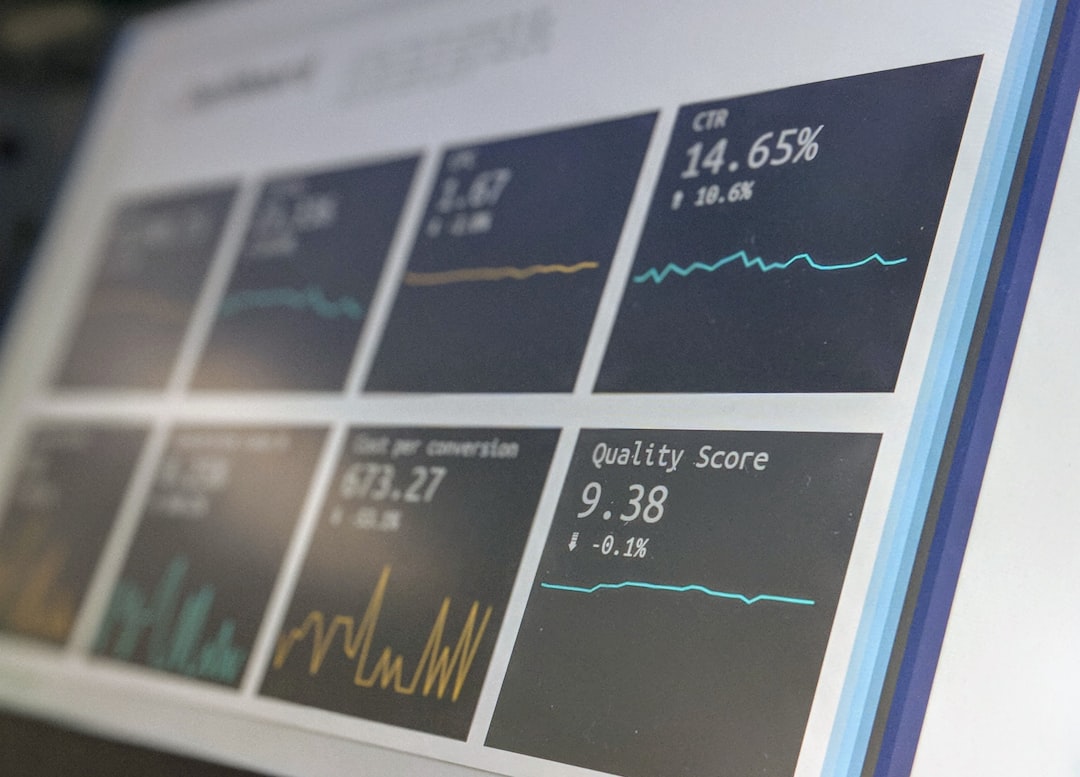In the ever-evolving landscape of technology, the ability to harness and analyze machine data has become paramount for organizations striving to maint
When a security incident occurs, the speed and effectiveness of the response can significantly impact the outcome.
By aggregating data from various sources, Splunk enables security teams to gain a comprehensive view of an incident in real time.
This holistic perspective allows for quicker identification of the root cause and facilitates more informed decision-making during critical moments. Additionally, Splunk’s powerful search capabilities allow teams to drill down into specific events or logs related to an incident. This granularity is essential for understanding the timeline of events leading up to a breach or anomaly.
With the ability to correlate data across different systems, security professionals can uncover hidden relationships between seemingly unrelated events, providing deeper insights into the nature of the threat. By leveraging Splunk for incident response, organizations can not only mitigate damage but also learn from incidents to strengthen their defenses against future attacks.
Best Practices for Maximizing Security with Splunk
| Best Practices for Maximizing Security with Splunk |
|---|
| 1. Use Role-Based Access Control (RBAC) to restrict access to sensitive data. |
| 2. Implement multi-factor authentication for user logins. |
| 3. Regularly update and patch Splunk software to address security vulnerabilities. |
| 4. Encrypt data both at rest and in transit to protect sensitive information. |
| 5. Monitor and analyze user activities and access logs for potential security threats. |
| 6. Utilize Splunk Enterprise Security to gain visibility into security events and incidents. |
To fully harness the potential of Splunk for security purposes, organizations should adopt best practices that enhance its effectiveness. First and foremost, it is crucial to establish a clear strategy for data ingestion. Organizations should prioritize which data sources are most relevant to their security posture and ensure that these sources are consistently monitored.
This targeted approach not only reduces noise but also allows security teams to focus on the most critical information. Another best practice involves creating customized dashboards tailored to specific security needs. By designing dashboards that highlight key performance indicators (KPIs) and potential threats, organizations can facilitate quicker decision-making during incidents.
Furthermore, regular training sessions for staff on how to use Splunk effectively can significantly improve the overall security posture of an organization. Empowering team members with the knowledge and skills to navigate the platform ensures that they can leverage its full capabilities when responding to threats.
Utilizing Machine Data Analysis for Threat Detection
Machine data analysis is a cornerstone of modern cybersecurity strategies, and Splunk excels in this area. By analyzing vast amounts of machine-generated data, organizations can identify patterns that may indicate potential threats. For instance, unusual login attempts or spikes in network traffic can serve as early warning signs of a possible breach.
Splunk’s advanced analytics capabilities enable users to set up alerts based on predefined thresholds or anomalies, ensuring that security teams are notified promptly when suspicious activity occurs. Moreover, machine learning algorithms integrated within Splunk can enhance threat detection by continuously learning from historical data. This adaptive approach allows the system to improve its accuracy over time, reducing false positives and enabling security teams to focus on genuine threats.
By utilizing machine data analysis effectively, organizations can stay one step ahead of cybercriminals and respond proactively to emerging threats.
Implementing Real-time Monitoring with Splunk

Real-Time Monitoring for Enhanced Security
In today’s fast-paced digital environment, real-time monitoring is crucial for maintaining a robust security posture. Splunk’s ability to provide real-time insights into system performance and security events allows organizations to respond swiftly to potential threats. By continuously ingesting and analyzing data from various sources, Splunk ensures that security teams have access to up-to-the-minute information regarding their infrastructure.
Proactive Threat Detection with Splunk
The implementation of real-time monitoring with Splunk involves setting up alerts that notify teams of any anomalies or suspicious activities as they occur. This proactive approach enables organizations to take immediate action before a minor issue escalates into a full-blown crisis.
Fostering a Culture of Vigilance
Real-time monitoring fosters a culture of vigilance within the organization, encouraging employees to remain aware of potential threats and report any unusual behavior they may observe. This collective awareness enables organizations to stay one step ahead of potential threats and maintain a secure environment.
Benefits of Real-Time Monitoring
By leveraging Splunk’s real-time monitoring capabilities, organizations can respond swiftly to potential threats, prevent minor issues from escalating, and maintain a secure environment. This proactive approach to security enables organizations to stay ahead of the curve and protect their infrastructure from potential threats.
Enhancing Incident Response with Splunk’s Data Analysis Capabilities
Splunk’s robust data analysis capabilities significantly enhance incident response efforts by providing security teams with actionable insights during critical situations. When an incident occurs, having access to comprehensive data allows teams to conduct thorough investigations quickly. By correlating logs from various systems and applications, Splunk helps identify the scope of an incident and determine which systems may have been affected.
Furthermore, Splunk’s visualization tools enable teams to create detailed timelines of events leading up to an incident. This chronological perspective is invaluable for understanding how an attack unfolded and what vulnerabilities were exploited. By analyzing this information post-incident, organizations can implement targeted improvements to their security measures, ultimately reducing the likelihood of similar incidents occurring in the future.
Integrating Splunk with Security Information and Event Management (SIEM) Systems
Integrating Splunk with Security Information and Event Management (SIEM) systems can significantly enhance an organization’s overall security strategy. SIEM solutions aggregate and analyze security data from across the enterprise, providing a centralized view of potential threats. By incorporating Splunk into this ecosystem, organizations can leverage its powerful analytics capabilities alongside the comprehensive data aggregation offered by SIEM systems.
This integration allows for more sophisticated threat detection and response capabilities. For instance, while SIEM systems may provide alerts based on predefined rules, Splunk’s machine learning algorithms can analyze historical data patterns to identify anomalies that may not fit traditional threat models. This complementary approach enhances situational awareness and enables security teams to respond more effectively to emerging threats.
In conclusion, as organizations continue to navigate the complexities of cybersecurity in an increasingly digital world, tools like Splunk play a vital role in enhancing their defenses. From machine data analysis for threat detection to real-time monitoring and incident response capabilities, Splunk offers a comprehensive suite of features designed to empower IT professionals in their quest for robust security measures. By adopting best practices and integrating with existing systems like SIEMs, organizations can maximize their investment in Splunk and create a resilient security posture capable of adapting to evolving threats.
Wenn Sie sich für Themen wie IT-Überwachung und Sicherheitsüberwachung interessieren, die eng mit den Funktionen von Splunk verbunden sind, könnte der Artikel “Challenges and Opportunities in the Metaverse: Ethical Considerations” aufschlussreich sein. Dieser Artikel behandelt zwar primär ethische Überlegungen im Metaverse, bietet jedoch auch Einblicke in die Überwachung und Datensicherheit, die für das Verständnis von IT-Sicherheitsmanagement und Log-Management relevant sein können. Sie können den vollständigen Artikel hier einsehen: Challenges and Opportunities in the Metaverse: Ethical Considerations.
FAQs
What is Splunk?
Splunk is a software platform used for searching, monitoring, and analyzing machine-generated big data, via a web-style interface. It captures, indexes, and correlates real-time data in a searchable repository from which it can generate graphs, reports, alerts, dashboards, and visualizations.
What are the main use cases for Splunk?
Splunk is commonly used for machine data analysis, IT monitoring, security monitoring, log management, and incident response. It can be used to gain insights into operational intelligence, application management, security and compliance, and business analytics.
How does Splunk help with IT monitoring?
Splunk helps with IT monitoring by collecting and analyzing data from various sources such as servers, applications, databases, and network devices. It provides real-time visibility into the performance and availability of IT infrastructure, allowing for proactive monitoring and troubleshooting.
How does Splunk assist with security monitoring?
Splunk assists with security monitoring by aggregating and analyzing security data from various sources such as firewalls, intrusion detection systems, and endpoint security solutions. It can detect and respond to security threats, as well as provide insights into security incidents and compliance requirements.
What is the role of Splunk in log management?
Splunk plays a crucial role in log management by collecting, indexing, and analyzing log data from different systems and applications. It helps in troubleshooting issues, identifying trends, and meeting compliance requirements by providing a centralized platform for log data analysis.
How does Splunk support incident response?
Splunk supports incident response by providing real-time visibility into security events and operational issues. It enables rapid investigation and response to security incidents, as well as helps in identifying the root cause of operational disruptions.











Leave a Reply